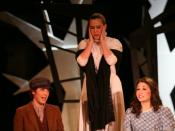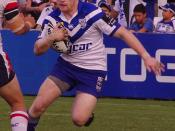ÃÂThe Turn of The ScrewÃÂ was written during a time in which society was rapidly changing; old views and attitudes were being replaced by the new and challenges arose against what had previously been deemed the acceptable social norm. In ÃÂThe Turn of The ScrewÃÂ James presents the reader with a story that is inescapably and purposely ambiguous, or even contrary, to the moral, gender and social assumptions held on to by the society of his time. Subtly challenging these social boundaries, James used literature as a way through which he was able to explore humanity and dissect prevalent social presumptions.
A sense of ÃÂinverted orderÃÂ runs throughout JamesÃÂs novella and is at times more apparent than at others. The inverted state of being in Bly in relation to the characters and their actions ÃÂ something that will be analysed in greater detail in forthcoming paragraphs ÃÂ is preceded and amplified by the way in which James presents the story itself.
Despite being asked by a periodical of the time to create a seasonal tale, James ÃÂtransforms the tinselly genre so as to render it barely recognisableÃÂ . In fact, James does not adhere to the defined conventions of any prescribed genre, instead amalgamating elements from the genres of ÃÂghost storyÃÂ, ÃÂfairy taleÃÂ and the ÃÂgovernessÃÂ novel. This early sense of ambiguity is reinforced by the way in which James presents ÃÂ or specifically does not present ÃÂ the ÃÂauthorÃÂ of the tale. The telling of the story is done through a complex web of narrators and intermediaries; there is a distinct lack of clarity as to whom the story really ÃÂbelongsÃÂ and who should be looked upon for answers to forthcoming moral and social questions. Using this initial framework ÃÂ noticeably not called a prologue...



Good effort
Good essay, good content. Maybe you could have knocked the word count up a bit....
0 out of 0 people found this comment useful.